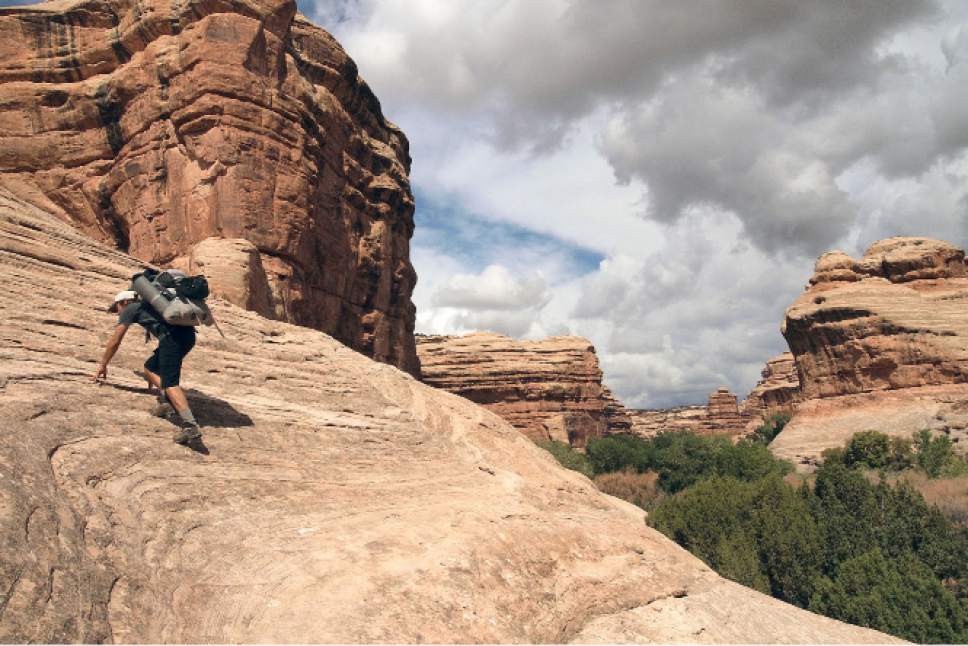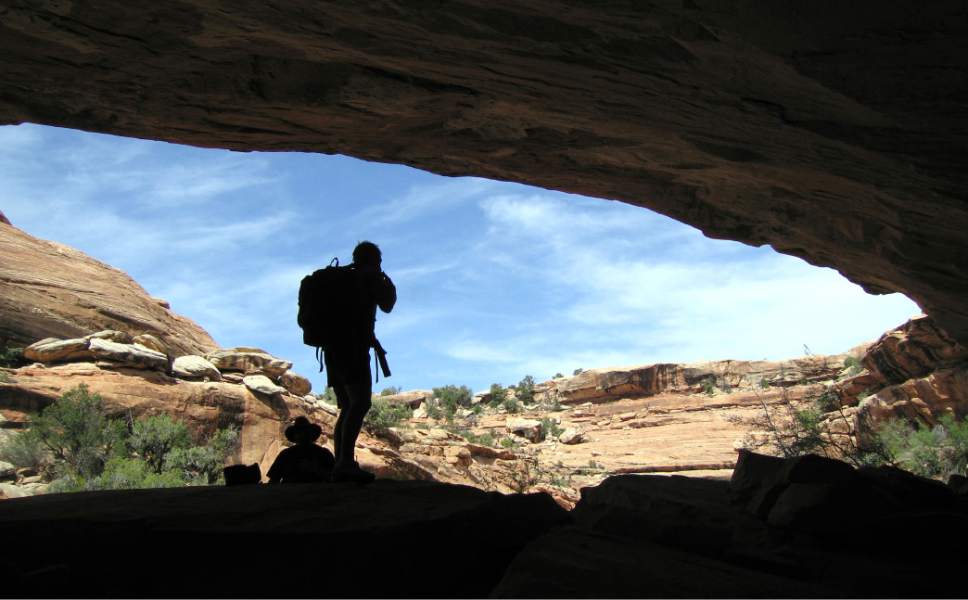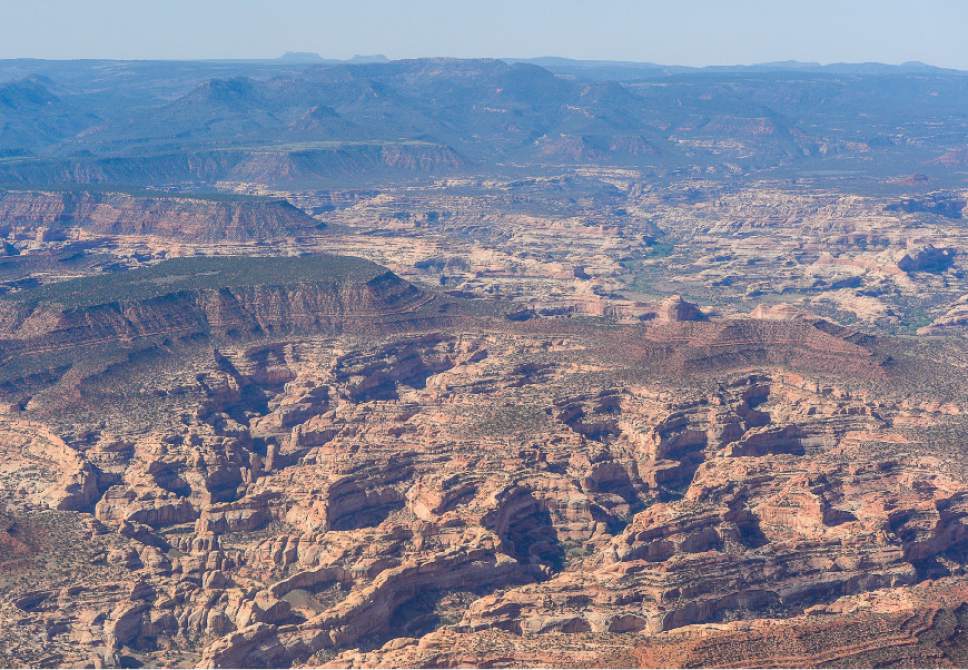This is an archived article that was published on sltrib.com in 2017, and information in the article may be outdated. It is provided only for personal research purposes and may not be reprinted.
Utah officials are in no hurry to trade dozens of state school trust land parcels in the new Bears Ears National Monument for federal lands elsewhere.
While the Utah School and Institutional Trust Lands Administration (SITLA) embraces the concept of land swaps as a way to consolidate its land holdings in places amenable to development, its board needs more information before committing to trading its 109,000 acres inside the new 1.3 million-acre monument in San Juan County, the agency's executive director, David Ure, said.
The U.S. Interior Department, Ure said, has had little time to prepare and research a potential trade, leaving SITLA's board little choice but to delay.
"There is no time to sign off on the land we want," Ure said. "At this stage we will analyze what's in the best interest of our beneficiaries. What we are going to do and where we want to go, I can't tell right now."
In the face of fierce pushback from state and local officials, President Barack Obama designated Bears Ears on Dec. 28 through a proclamation instructing Interior Secretary Sally Jewell to explore a land swap and hammer out an agreement with SITLA. She was to report back to the White House by Thursday — Obama's last full day in office.
In a letter sent Wednesday to Utah Gov. Gary Herbert and CC'd to Ure and the White House's Council on Environmental Quality, Jewell acknowledged that Donald Trump's administration now will oversee the trade.
"Such an exchange would benefit the state's schoolchildren by providing revenue-generating property to SITLA and benefit all Americans by conserving the natural and cultural resources on state lands within the monument boundary," Jewell wrote. "It is unfortunate that, due to this vote [by the SITLA board to not pursue a land exchange], the department is now unable to memorialize the work that had been done by our teams."
Despite calls from Utah leaders for Trump's administration to undo the monument designation, Jewell expressed "great confidence" that "a common-sense land exchange" could be worked out under the incoming president.
The Interior Department began exploring the potential for a Bears Ears swap back in July, when Rep. Rob Bishop introduced his Public Lands Initiative, which proposed a national conservation area for Bears Ears whose boundaries largely mirror what is now in the national monument. State trust sections would be swapped for Bureau of Land Management holdings elsewhere as part of that legislation. Interior and SITLA officials met Sept. 8 and Oct. 5 to discuss an exchange.
"The discussions were honest and constructive and made significant progress toward developing a conceptual framework and map for a land exchange that would benefit the state's schoolchildren and enhance protection of cultural and biological resources," wrote Jewell, who praised the SITLA staff for "consummate professionalism, strategic vision and creative thinking."
But the new monument is looking less like a fait accompli and more like a work in progress as the Trump administration prepares to take over, according to the Utah governor's office.
"It seems prudent to resolve the monument issues first before finalizing decisions about SITLA lands located within the current monument boundaries," said Herbert's deputy chief of staff, Mike Mower, who sits on the SITLA board.
Monument advocates wonder why SITLA doesn't jump at the chance to unload its sections scattered across Cedar Mesa, a topographically complicated landscape that is largely managed for grazing, primitive recreation, wood gathering and archaeological preservation.
A centerpiece of the Bears Ears region, the mesa harbors countless artifacts that record thousands of years of occupation by ancient American Indians. These aren't lands that lend themselves to revenue generation, so with or without a national monument, it would make more sense for the schools trust to get out of Bears Ears, said Josh Ewing, of Friends of Cedar Mesa.
And if history is a good guide, SITLA's federal lands swaps have been a good deal for Utah schools, but the complex process can take years to pull off, partly due to all the appraisals and approvals required.
The highly controversial 1996 designation of the Grand Staircase Escalante National Monument, for example, came with a swap provision that wound up advancing SITLA's core mission of enriching the endowment, which now exceeds $2 billion.
In that expedited deal finalized in 1998, SITLA traded 363,000 acres of sections scattered inside the Staircase monuments, four National Park Service units and three national forests for BLM lands, plus a cash payment of $50 million to make up the difference in market values.
SITLA received 145,000 acres that contained 160 million tons of coal and 185 billion cubic feet of natural gas. Then-Gov. Mike Leavitt predicted these lands would generate $1 billion over 30 years.
Another sticky question for any Bears Ears swap centers on where SITLA would trade into.
The state agency has signaled that it is most interested in acquiring consolidated blocks of mineral-bearing lands in the Uinta Basin. But it might look better politically if SITLA retained holdings in San Juan County, which has Utah's poorest and least developed communities and smallest portion of nonfederal land.
"Living near trust lands can be an opportunity for economic growth and employment and increased student population," San Juan School Board member Merri Shumway told the SITLA board at an emergency meeting held the week after the monument designation.
That said, Shumway implored the board to not do anything to abet the monument, which furthers federal control of the landscape. It was premature to consider a land swap, she said, when state and local officials "and everyone I know" was working to overturn the monument.
Agreeing it needed more information, the board voted unanimously to put any swap on hold.
Brian Maffly covers public lands for The Salt Lake Tribune. Brian Maffly can be reached at bmaffly@sltrib.com or 801-257-8713.
Twitter: @brianmaffly









